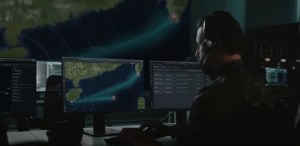House lawmakers want DOD to create a process for reporting and retiring irresponsible AI

Tucked into the House Armed Services Committee’s approved amendments to the National Defense Authorization Act for fiscal 2024 is a provision that would require the Pentagon to create and implement an oversight process to identify, correct or retire artificial intelligence capabilities used by the military but deemed not responsible by the government’s standards.
Introduced by Rep. Sara Jacobs, D-Calif., the legislative language seeks to mandate the Defense Secretary — via the Chief Digital and Artificial Intelligence Office (CDAO) — to “develop clear criteria to determine if an [AI] technology is functioning responsibly” and “take steps to integrate such process across the organizations and elements of the” department, namely the combatant commands.
Officials crafting the process would need to incorporate the Pentagon’s recently produced “responsible AI” guidelines and other relevant existing materials, according to the amendment.
The bill notes that once the process is developed, it should be shared with all the department’s makers, and end users, of artificial intelligence-enabled systems. The intent is to establish a formal pathway for U.S. service members to report potential AI errors and biases — including in combat.
DOD would be required to begin implementing the new process within 120 days of the bill’s passage, and provide subsequent reports on associated impacts to Congress.
This legislative proposal comes as concerns about the uncertain potential for harm posed by emerging and likely disruptive generative AI technologies continues to intensify.
Earlier this year, the Pentagon updated DOD Directive 3000.09, its guidance for the design, development, acquisition, testing, fielding and employment of autonomous weapon systems. With some exceptions, a designated group of senior officials have to sign off before autonomous weapons can enter formal development or be fielded. The guidance also calls for the establishment of training, doctrine, tactics, techniques and procedures that are applicable to capabilities that are developed and fielded.
The HASC passed its version of the NDAA on Thursday. The legislation must still be passed by the full House, reconciled with the Senate’s version of the NDAA and be signed by the president before becoming law.






